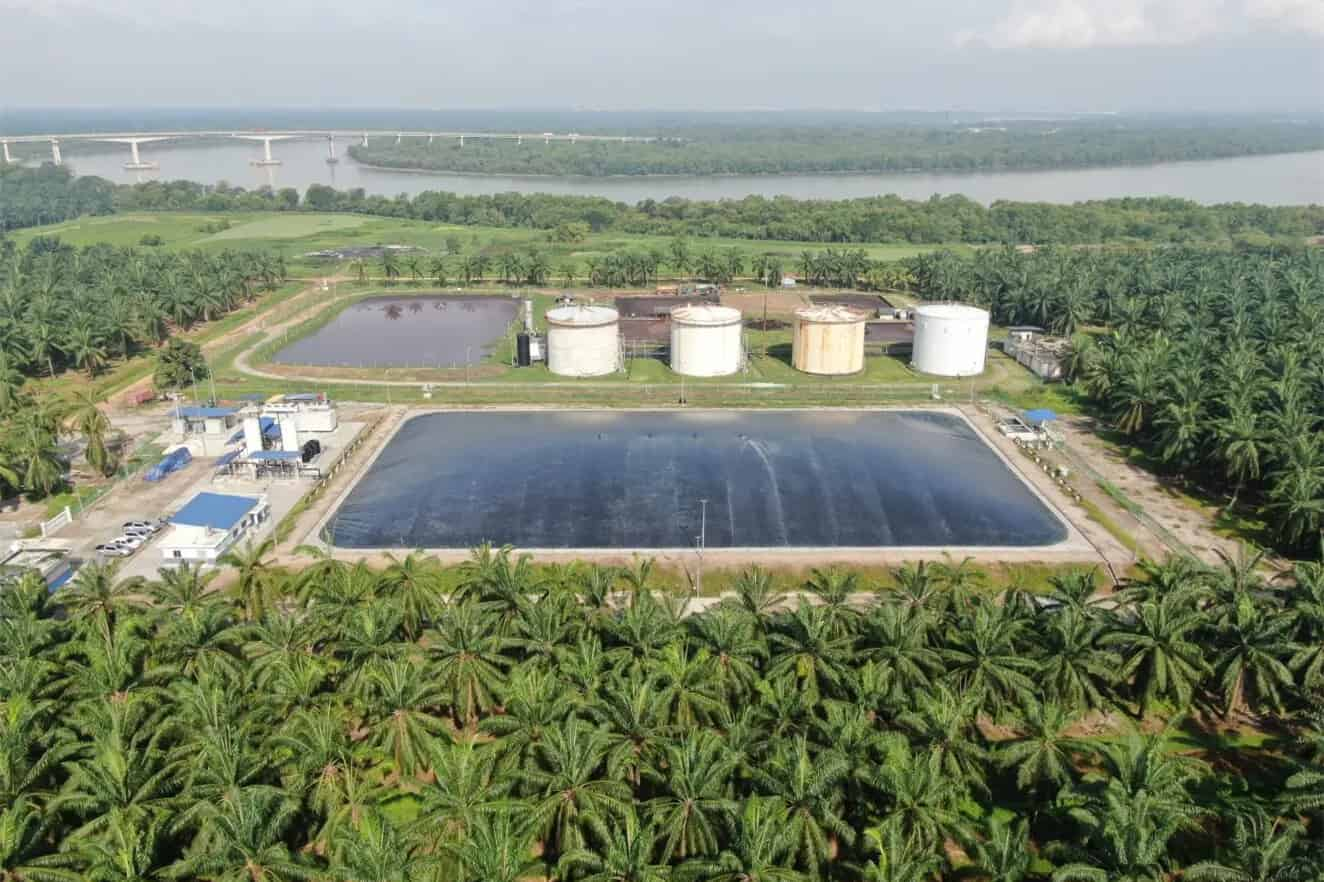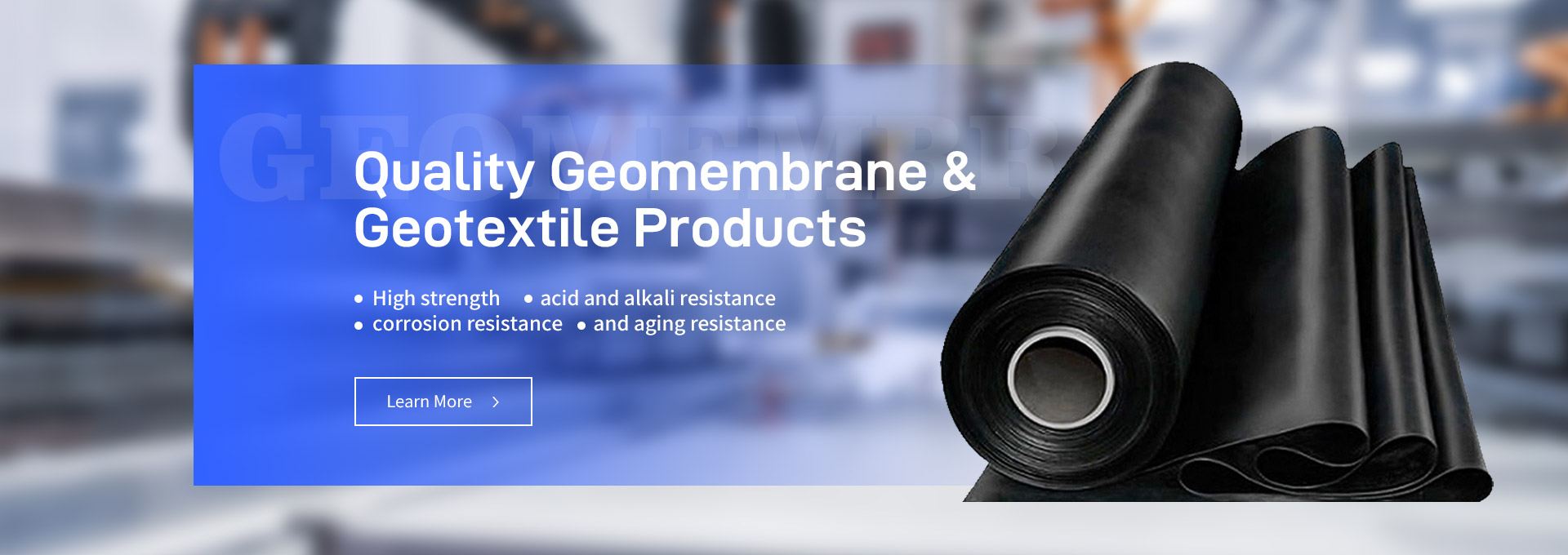The construction of biogas systems often requires the use of specialized materials, and the biogas pond geomembrane plays a crucial role in ensuring efficiency and effectiveness. These geomembranes serve as barriers to prevent leaks and ensure the containment of gases and liquids, making them vital in biogas pond construction. Welding technology is a critical aspect of installing these geomembranes properly. If the welding is not done correctly, it could lead to leaks, inefficiency, and overall system failure. This article will take a deep dive into the welding technology for biogas pond geomembranes, focusing on the key steps to ensure a high-quality installation and discussing common problems that can arise during the process. For those involved in this industry, understanding these factors is key to delivering effective solutions.

Understanding the Importance of Biogas Pond Geomembrane Welding
Welding is the process used to fuse pieces of geomembrane to create a single, continuous sheet that acts as a seal. This prevents any unwanted seepage from the biogas pond, which is especially important for maintaining efficiency in energy production. High-quality welding ensures that the biogas pond geomembrane is impermeable, preventing gas or fluid from leaking out. This makes welding a cornerstone of biogas pond construction that can either make or break the success of an entire project.
Geomembrane liners are typically composed of High-Density Polyethylene (HDPE), Linear Low-Density Polyethylene (LLDPE), or Polyvinyl Chloride (PVC), each offering different degrees of flexibility, durability, and chemical resistance. The selection of the appropriate material and the proper execution of welding are crucial to ensuring the integrity and functionality of the biogas system.
Key Steps in the Welding Process
Step 1: Preparation of the Geomembrane
The first and most important step in welding biogas pond geomembrane is to ensure the geomembrane surfaces are clean and free of dust, dirt, or any other debris. Any contamination can compromise the weld, leading to leaks or weak points that might fail over time. The work area should be dry, and the geomembrane liners should be allowed to acclimate to the ambient temperature to avoid issues like thermal contraction or expansion.
For efficient preparation:
Lay out the geomembrane panels flat on the prepared substrate.
Clean the edges that are to be welded with a clean cloth or brush.
Ensure that there is an overlap of at least 100 mm between sheets for a secure weld.
Step 2: Tack Welding
Once the preparation is complete, the geomembrane sheets are tack welded. Tack welding serves as a temporary joint to hold the geomembrane sheets in position before the actual welding is performed. This prevents any movement or misalignment during the final weld, ensuring precision.
During tack welding:
Use a manual welding gun for precision.
Ensure that the sheets are properly aligned to avoid wrinkles.
Perform tacking at regular intervals to maintain uniformity across the length of the geomembrane.
Step 3: Main Welding
The main welding of the biogas pond geomembrane involves using either extrusion welding or hot wedge welding, depending on the material type and site conditions.
Hot Wedge Welding:
This method is often used for HDPE geomembrane liners. A hot wedge welder uses heated wedges to fuse the two sheets together, creating a strong, continuous bond. This method is favored for its efficiency, particularly when welding large areas.
Extrusion Welding:
For more complex areas, like seams or around penetrations, extrusion welding is preferred. In this technique, a plastic rod is melted and used to bond the geomembrane sheets together. This approach provides additional material at the weld joint, enhancing its strength.
Step 4: Testing the Welds
Testing the welds is crucial to ensure the biogas pond remains waterproof and efficient. There are different methods used to test the welds:
Air Channel Test:
This is commonly used for double seams. Air is pumped into the channel between the seams, and the pressure is monitored to detect leaks.
Vacuum Box Test:
This test involves applying soapy water over the weld and placing a vacuum box over it. If bubbles are seen, there is a leak.
Peel and Shear Test:
These are destructive tests performed on sample welds to assess the tensile strength of the weld.
Testing is essential for ensuring the quality of the welds and the long-term durability of the biogas pond.
Common Problems in Welding Biogas Pond Geomembrane
1. Inconsistent Heat Application
Heat consistency is crucial for creating a reliable weld. If the temperature is too high, it can degrade the material, causing it to become brittle. Conversely, if the temperature is too low, the weld will be weak, resulting in poor bonding. This issue is especially common in manual welding processes where temperature control may not be precise.
2. Poor Surface Preparation
The presence of dust, moisture, or dirt can compromise the weld integrity. Before welding, it’s important to ensure the surface of the biogas pond geomembrane is thoroughly cleaned. Any foreign substance can create weak points that are prone to leakage.
3. Inadequate Overlap
If the geomembrane sheets are not overlapped adequately, there will not be enough surface area to create a strong bond. The recommended overlap is at least 100 mm, but this can vary depending on the thickness of the geomembrane.
4. Weather Conditions
Environmental conditions can significantly affect the quality of the weld. Cold weather can make the geomembrane less flexible, increasing the risk of cracking during welding. Hot weather, on the other hand, can make the material overly soft. Wind can also interfere by cooling the weld zone too quickly. Ideally, welding should be conducted under controlled conditions or with suitable adjustments based on weather.
5. Wrinkling of the Geomembrane
Wrinkles can lead to poor welds. If the geomembrane is not laid flat, wrinkles may form and cause weak points when welded. Ensuring proper alignment and tension during installation helps avoid this issue.
Best Practices for Effective Welding
1.Proper Training:
Operators should be adequately trained in welding techniques and equipment use to avoid common problems. Professional welders know how to adjust equipment settings for different geomembrane materials and environmental conditions.
2.Use of Quality Equipment:
High-quality welding machines that provide consistent heat application are essential for achieving reliable results. Working with experienced waterproofing geomembrane exporters can also ensure that the best materials and accessories are used for the job.
3.Regular Testing:
Conducting regular tests during and after the welding process can help catch and fix any issues before the biogas pond is put into use. It is more cost-effective to identify problems at this stage than to deal with leaks after the pond has been filled.
4.Weather Considerations:
Whenever possible, schedule welding during favorable weather conditions. If that is not possible, consider protective measures like setting up windbreaks or working during cooler parts of the day to ensure better control over the welding process.
Conclusion
The welding of biogas pond geomembrane is a critical process that directly affects the efficiency and reliability of a biogas system. By understanding and adhering to the key steps—preparation, tack welding, main welding, and testing—project managers and technicians can ensure a high-quality installation. Overcoming common problems like inconsistent heat application, poor surface preparation, and environmental challenges is crucial for achieving the best results.
For those in need of high-quality materials, working with reputable waterproofing geomembrane exporters can make a significant difference. High-quality geomembrane liners, combined with proper welding techniques, ensure long-lasting and effective containment for biogas production.
Incorporating best practices and focusing on precision during the welding process can help mitigate issues, leading to more reliable and efficient biogas systems. Whether you are an installer, project manager, or business owner, understanding these intricacies of geomembrane welding will empower you to make better decisions and ensure successful biogas pond projects.

